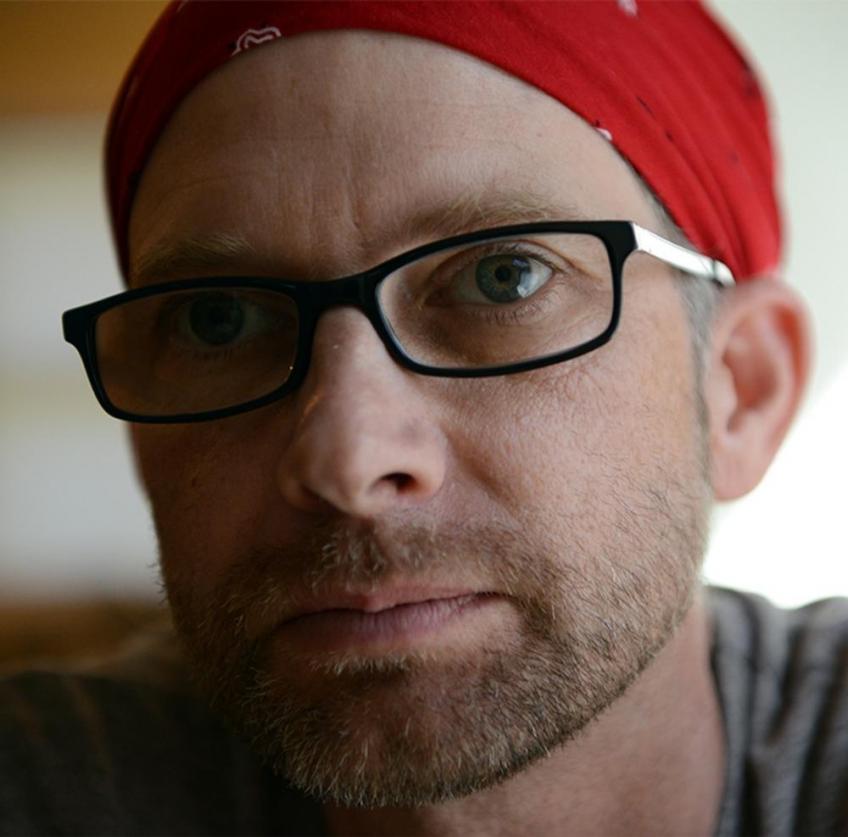John Sabraw
- Professor of Painting
- Chair, Painting and Drawing
Areas of Expertise
- Art
- Art Science Collaboration
- Art and Science
- Art in Academia
- Environment
- Environmental Art
- Painting
- Pigments
- Sustainability
Expert Bio
There are two areas of Ohio University Professor of Art John Sabraw’s life that he is exceptionally passionate about - art and sustainability. And he has found ways to marry the two.
An expert painter, designer, illustrator and author, Sabraw seeks projects that not only allow him to expand his creativity, but those that also help the environment.
“The environment and sustainability are universally shared things on this planet,” he says. “When you look at almost any pressing issue, you can trace it back to sustainability. So I made the choice to dedicate myself in finding ways of making this world more sustainable.”
One such project has drawn national attention in recent years. For over 20 years researchers and faculty members at Ohio University have been dedicated to revitalizing creeks and streams decimated by acid mine drainage, a common regional problem in Southeast Ohio due to closed and abandoned coal mines.
Over time, the abandoned mines fill with water which reacts with iron sulfides left over from the coal removal and turns it to iron hydroxide and sulfuric acid when the water is exposed to oxygen. The acid leaches iron, manganese, cadmium, zinc, copper, arsenic and aluminum – a lethal combination that turns creeks and streams orange and killing most living organisms. Ironically, paint colors are often made from iron oxides, Sabraw said, which sparked an idea.
“I realized I could take this sludge and transform it from something detrimental to the environment into some beautiful work of art,” he said.
Working alongside researchers and faculty from OHIO’s Russ College of Engineering and Technology and the Voinovich School of Leadership and Public Service who are working to restore the creeks and streams, the artist dries the sludge to form the basis of paint pigments.
Much of Sabraw’s work is born from the idea of natural phenomenon. His method of making sense of the glory and beauty of the natural patterns of our world is reflected in Chroma, a collection of bold circles of life saturated in kaleidoscopic colors. The titles of the works suggest the inspiration for each piece. Tidal Pool is a rich sphere of blues and greens, and the pieces called Karst echo the rugged lines of limestone and minerals found underground. Each piece sports six to 24 layers of paint slowly applied over the course of several weeks in the studio, and each layer inviting the viewer to infer another shade of meaning from the images: Is the circle a slice of earthen jasper, a flaring gamma ray in the night sky, a swatch of algae, a single cell of energy pulsing in the body?
After painting, Sabraw lets nature finish - temperature, humidity, air flow all influence the outcome of each canvas. The various exposures radically change the way in which the artwork dries. On hot and arid days, the pigments dry much smoother and flow into each other; whereas on humid days the artwork dries much slower, making the pigment linger and form pools. In contrast, colder temperatures cause the pigments to reticulate and separate from each other.
Drying can take up to eight weeks, depending on the environment, but only when thoroughly dry can the formations and elements truly be seen, Sabraw says.
In addition to his teaching at Ohio University, the artist also serves as an advisor to the Scribble Art Workshop, a New York City-based art school for all ages that teaches the importance of art and creating pieces that support sustainability.
